Beanley Galloway & Belted Galloway Herd
The Beanley Galloway and Belted Galloway herd was established in 2006 following a decision to sell our conventional suckler herd in favour of a lower input system. We operate a spring calving regime, putting 75 Galloways and 25 Belted Galloways to the bull every year. Our aim is to produce larger, longer cattle and to convert low quality forage into high quality meat. We therefore select our bulls very carefully.
We are establishing pilot herds of extensive beef cattle on our arable farms in Latvia, Lithuania and Estonia using primarily Belted Galloway, Galloway and Aberdeen Angus with the aim of utilising the large areas available of low cost grazing for the quality end of the Russian and central European markets
We believe that without figures we cannot accurately assess the viability and success of our herd. We therefore carefully cost all individual cattle enterprises, which we then benchmark against national statistics, primarily EBLEX, QMS and the SAC’s Blue Grey suckler cow study. Benchmarking financial and physical performance allows us to assess our strengths and weaknesses, allowing us to make the correct decisions for the future, and ultimately increasing profitability.
During the summer the cows graze our 500 acre hill or the hills above Otterburn & Hawick. In the winter they are given a supplementary feed of conservation silage. This comes from the grass margins around arable fields. They do not require concentrates. We have also found that the unselective grazing of the Galloway and Belted Galloway is assisting in improving our hill for many important species of plant and wildlife.
Since changing to the Galloways & Belted Galloways we have found the following:
- Substantially reduced feeding costs
- Considerable reduction in labour and power requirements. Now 30% of previous costs
- Although not bulled until two years old, we expect our cows will have 2 – 3 more calves than conventional suckler cows during their lifetime.
- Easy outdoor calvers
- Carcass weights are no less than continental crosses. Although they take longer to finish than conventional cattle, they do so at much lower costs.
- The Belted Galloways are not such good cattle as the Galloways. Growth rates and carcass weights are lower despite being kept on similar grazing
- We have found the Galloways to be better thrivers on a hard hill probably because many Belted Galloway herds are now kept on softer going and do not shift as well
Article and photos courtesy of Vicky Hogg
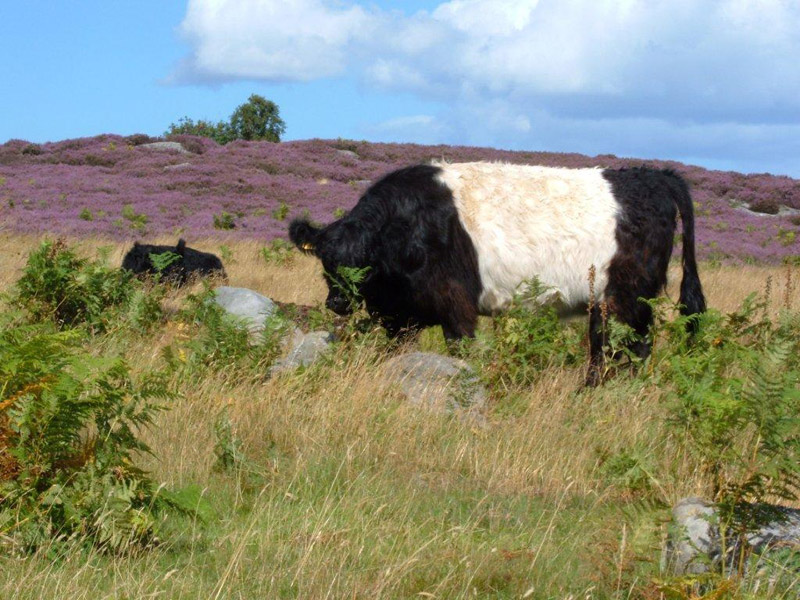
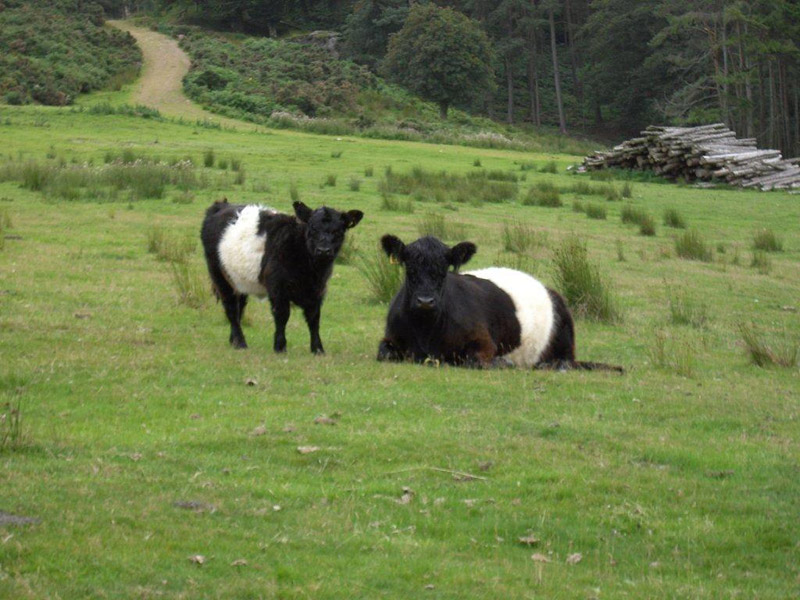
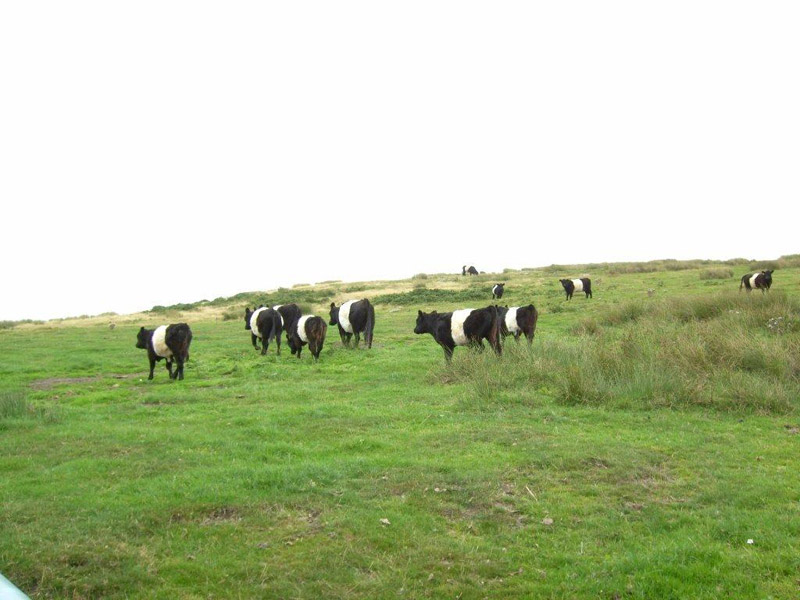
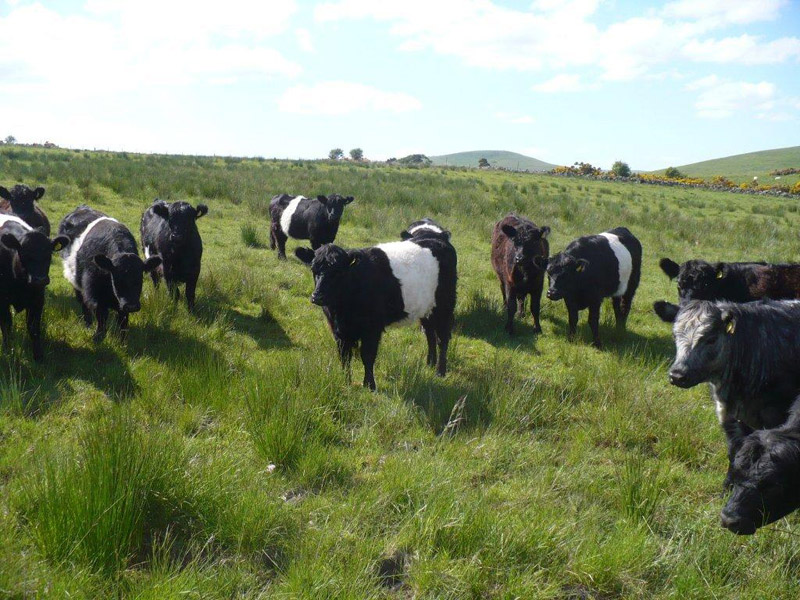
Conservation grazing
10 years of experience with Belties on moorland
We started round about 10 years ago with grazing Belted Galloways on conservation land.
This land was used a long time ago by a dairy farm, later sold to our district community and before I asked to graze with cattle, completly out of use.
The area of this conservation land is about 5 hectares, some parts are very wet and nearly half is a mixture of dry and wet land. A lot of ditches go through this land and are not been cleaned for nearly 20 years. When I took over this area grass, reeds, rushes and nettles came up to my waist and higher. There is also an area with wool grass and some small willow trees.
The rules of conservation grazing are that only 1.5 animals, above 2 years old per hectare, are allowed. Further no fertilisation, no cleaning of the ditches no cutting grass by machinery or hand and no spraying against weeds.
It is very fascinating to see how small animal wildlife came back by grazing this area, at the beginning there were no pheasants, no rabbits, no partridges or other animals around.
Nowadays you can see them with their offspring searching for food in the grazing areas also snakes (adder and slow worm) and lizards at sunny places.
Another effect of grazing is the increasing number of wild flowers and insects. In the wet area frogs and dragonflies return.
The Belted Galloway does a very good job and they fit very well into this system of conservation grazing. They can select their food with so many different types of grass and herbs. Especially they like the reeds and the nettles when they are a bit older.
The fence around this area is only one wire electric fence, with every 100 meters wooden posts and between this, small metal posts. Important for the good working is the electrical appliance by a 12 Volt car battery which should be changed every 4 weeks. Before the new grazing period starts in spring it is necessary to clean the electric wire from grass and branches. Normally the grazing period finish at end of october and the cattle went to their dry winter feeding place (not far from our home)
In summary, both parts (nature and cattle) benefit from conservation grazing. But this job could only done by Galloways (or Highlands) and the Belted Galloway does it as well as the Galloway. But the advantage of the Beltie is, that you can clearly see them from far afield and they gave the landscape colourful points by their appearence.
Conservation grazing helps to market the Beltie meat because people like to see cattle in this natural environment and they want to know how they grow up and how you are feeding them . People trust you because they see you and your cattle every day and people want and like to buy locally.
By Hauke Aye, Germany



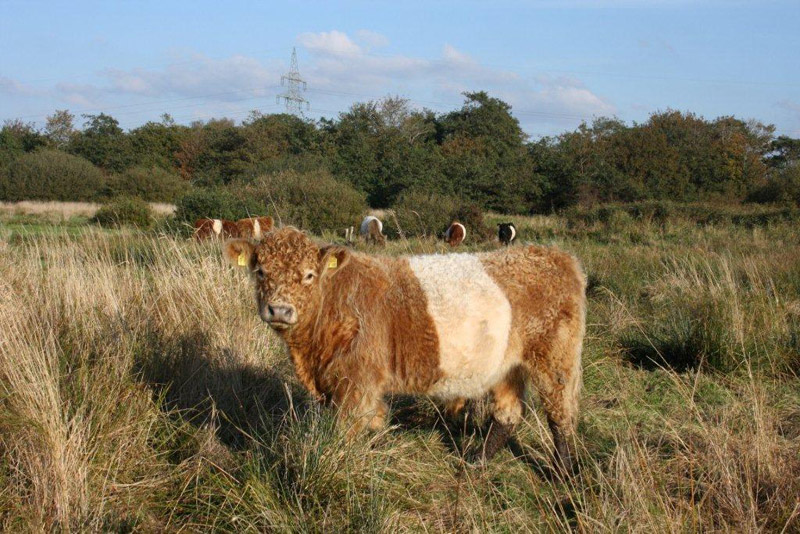
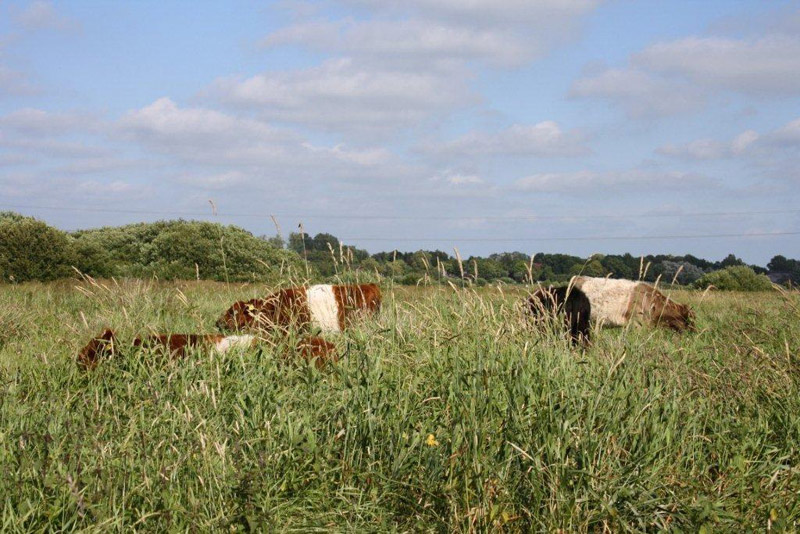

Conservation grazing
Conservation grazing sounds like a mine field, but with the right Site Manager and a common sense approach it is possible.
From my experience, the most important thing is to know your stock, their habits and their abilities. This will come in handy when you talk to the Site Manager regarding the targets they want to achieve for the land and what they would like your stock to do to preserve the land.
There are lots of do’s and don’ts when it comes to Conservation. First of all you will need to be aware if there is public access on the land, for example: Is there footpaths or do groups of people walk over the land doing plant surveys? Safety is essential for your animals. Secondly, you are not allowed to put a bull on Natural England Land, all these factors tell you what kind off animal you can graze ie young heifers, heifers in calf or cows with calves at foot.
You will need to get a plan off your Site Manager giving you the stock levels throughout the year. In wet years they will want less stock on the land. Always remember your animals are being used as a management tool. Furthermore, if the land is wet, heavy and peaty it will carry more fluke so be prepared to alter your fluking programme.
Can your stock survive on the poorer quality herbage?
If you are buying in your stock for conservation grazing, go to the farm first before buying and see where the animals have been reared. Have they been fed concentrates? Just because it has a white belt does not mean it can survive anywhere.
Highleys
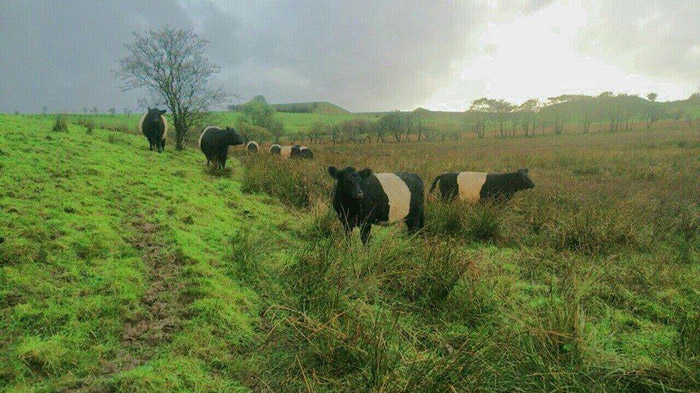
This is a block off Natural England Land that is rented on a yearly basis. There are approximately 15 acres of hay meadows which cannot be cut until 16th July, but we tend to cut it as late as possible due to late flowering Fauna. It has a light early graze depending on ground conditions then a late graze September. There is another 10 acres of rough grazing.
Clints Quarry
Clints Quarry belongs to the Cumbria Wildlife Trust and it is an old Limestone Quarry. I was asked to Autumn graze it with cattle but the site is unsafe with no vehicle access, therefore I said no to cattle, however I offered to put 20 lambs on the site to graze instead. We are now in our third year of grazing, the lambs go onto Clints Quarry mid-August and stay on for up to 12 weeks. It works on a headiage payment. This is where you are paid so much per a lamb for the time that they are grazing there.
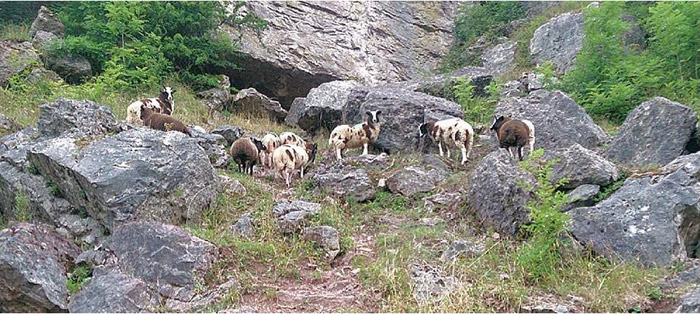
Both these plots of land have grazing licences, these are important to
both you and your Site Manager. When I first started grazing High Leys I was not sure what I was getting into, but in time I learnt and adapted. This has been achievable by having the right livestock that is fit for purpose. My Belted Galloways are used to poor grazing with bracken which contains a parasite called tics. When raised on this sort of ground the animals build up a resistance.
By Robin Murray
